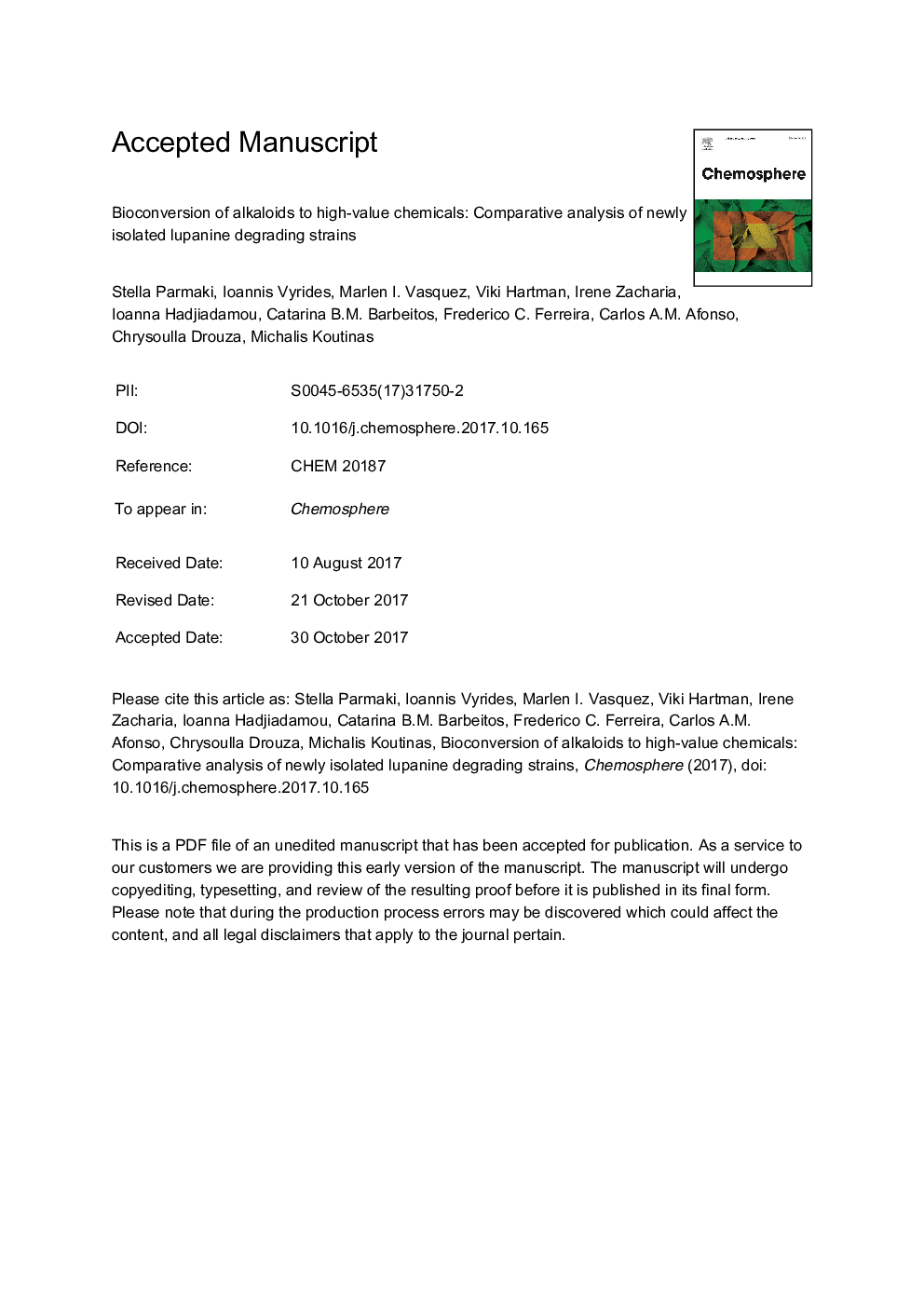| کد مقاله | کد نشریه | سال انتشار | مقاله انگلیسی | نسخه تمام متن |
|---|---|---|---|---|
| 8852710 | 1618778 | 2018 | 37 صفحه PDF | دانلود رایگان |
عنوان انگلیسی مقاله ISI
Bioconversion of alkaloids to high-value chemicals: Comparative analysis of newly isolated lupanine degrading strains
دانلود مقاله + سفارش ترجمه
دانلود مقاله ISI انگلیسی
رایگان برای ایرانیان
کلمات کلیدی
ITSLupaninei.v.p.o.i.p.EC50IC50ACNNCBILD50Quinolizidine alkaloids - آلکالوئیدها QuinolizidineOral administration - اداره دهان و دندانToxicity assessment - ارزیابی سمیتBioconversion - تبدیل زیستیBiodegradation - تجزیه زیستیintraperitoneal administration - تزریق داخل صفاقیIntravenous administration - تزریق داخل وریدیNMR - تشدید مغناطیسی هستهای lethal dose - دوز مرگبارaccession number - شماره ورود، شماره دسترسیNuclear magnetic resonance spectroscopy - طیف سنجی رزونانس مغناطیسی هسته ایNational Center for Biotechnology Information - مرکز ملی اطلاعات بیوتکنولوژیhalf maximal inhibitory concentration - نیمه حداکثر غلظت مهاریhalf maximal effective concentration - نیمه حداکثر غلظت موثرGas chromatography - کروماتوگرافی گازی
موضوعات مرتبط
علوم زیستی و بیوفناوری
علوم محیط زیست
شیمی زیست محیطی
پیش نمایش صفحه اول مقاله

چکیده انگلیسی
This work explores the potential for development of a lupanine valorization process evaluating different isolated microorganisms for their capacity to metabolize the alkaloid. Ecotoxicological assessment demonstrated that lupanine is toxic for Vibrio fischeri and Daphnia magna exhibiting EC50 values of 89 mg Lâ1 and 47 mg Lâ1 respectively, while acting both as growth inhibitor for a monocotyledonous and as promoter for a dicotyledonous plant. Among the eight aerobic and anaerobic strains isolated and identified Rhodococcus rhodochrous LPK211 achieved 81% removal for 1.5 g Lâ1 lupanine, while no end-products were detected by NMR constituting a promising microorganism for lupanine biodegradation. Moreover, Rhodococcus ruber LPK111 and Rhodococcus sp. LPK311 exhibited 66% and 71% of removal respectively, including potential formation of lupanine N-oxide. Pseudomonas putida LPK411 reached 80% of lupanine removal and generated three fermentation products potentially comprising 17-oxolupanine and lupanine derivatives with open ring structures enabling the development of alkaloid valorization processes.
ناشر
Database: Elsevier - ScienceDirect (ساینس دایرکت)
Journal: Chemosphere - Volume 193, February 2018, Pages 50-59
Journal: Chemosphere - Volume 193, February 2018, Pages 50-59
نویسندگان
Stella Parmaki, Ioannis Vyrides, Marlen I. Vasquez, Viki Hartman, Irene Zacharia, Ioanna Hadjiadamou, Catarina B.M. Barbeitos, Frederico C. Ferreira, Carlos A.M. Afonso, Chrysoulla Drouza, Michalis Koutinas,